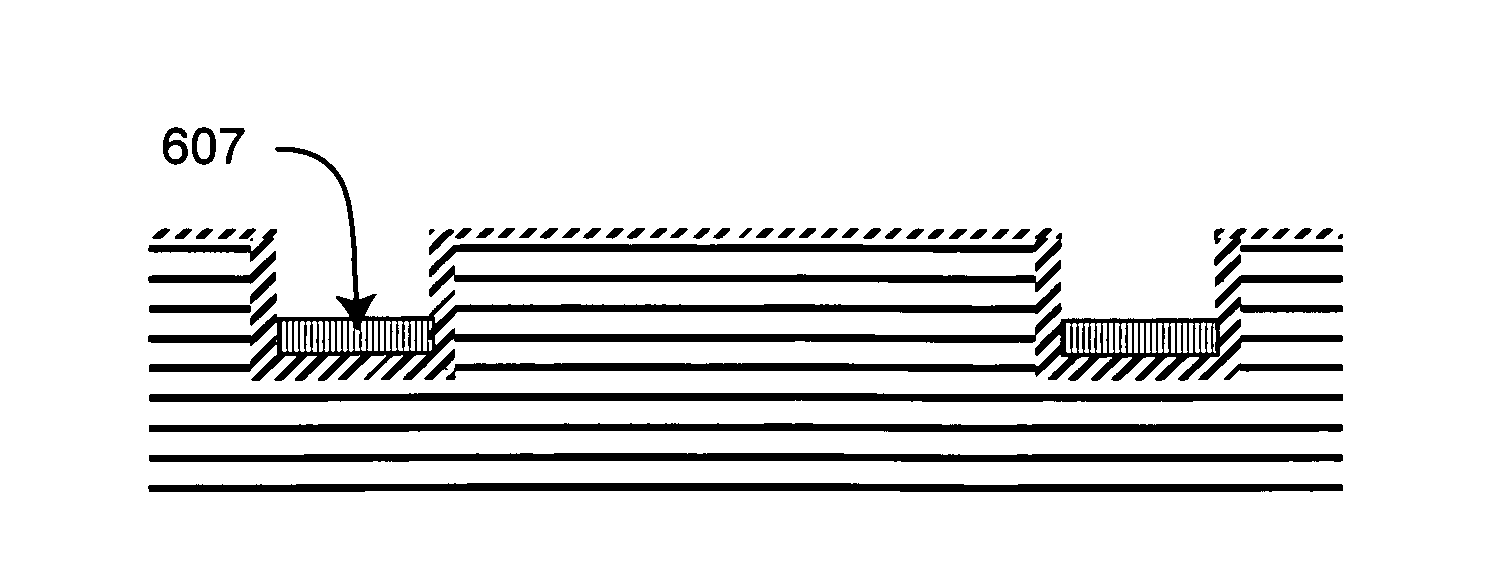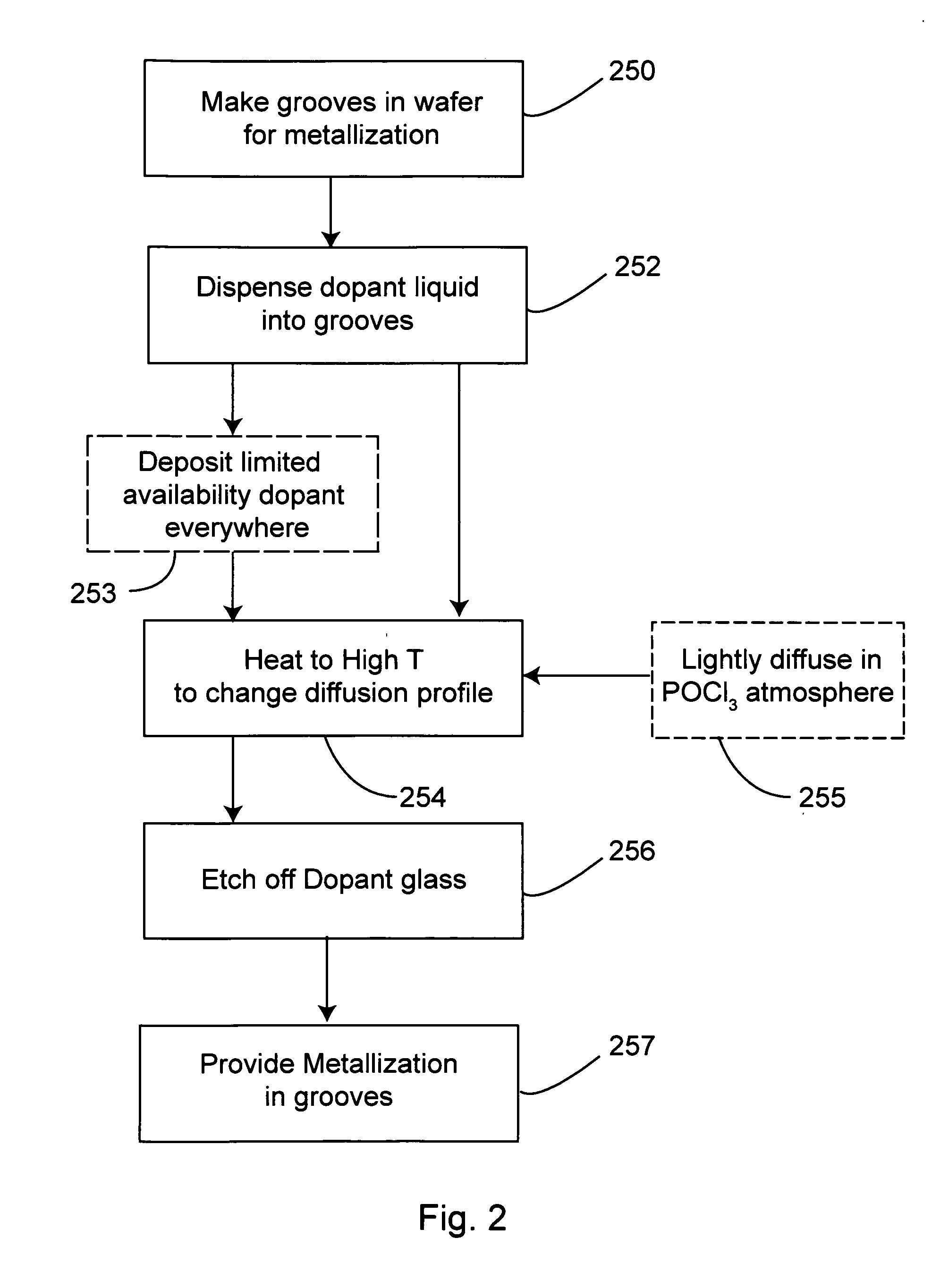Methods to pattern diffusion layers in solar cells and solar cells made by such methods
a technology of solar cells and diffusion layers, applied in the field of methods to make pattern diffusion layers in solar cells and solar cells by such methods, can solve the problems of reducing the concentration of p and a deep emitter, and reducing the electronic quality of materials, so as to prevent or minimize the reflection of light energy and less precision
- Summary
- Abstract
- Description
- Claims
- Application Information
AI Technical Summary
Benefits of technology
Problems solved by technology
Method used
Image
Examples
Embodiment Construction
Innovations disclosed herein include but are not limited to ways to form: 1) a selective emitter with deeper diffusion under the metallization areas for good contact resistance and good blue response; and 2) deep emitter gridlines. In contrast to known techniques for providing a selective emitter, which require alignment of a metal layer to the heavily diffused pattern, as well as at least two high temperature steps, the elegance of the general SAC architecture lends itself to implementation of a selective emitter with minimal extra processing and complexity. It is not necessary to maintain two different instances of the same pattern in register, and only one high temperature step is required. The process is self-aligning.
Similarly, it may be more cost effective to use the SAC architecture than to use other processing schemes to provide deep emitter gridlines, for instance perpendicular to conventional metal fingers (oriented in the same manner as the so-called semiconductor fingers...
PUM
| Property | Measurement | Unit |
|---|---|---|
| depth | aaaaa | aaaaa |
| depth | aaaaa | aaaaa |
| groove width | aaaaa | aaaaa |
Abstract
Description
Claims
Application Information
 Login to View More
Login to View More - R&D
- Intellectual Property
- Life Sciences
- Materials
- Tech Scout
- Unparalleled Data Quality
- Higher Quality Content
- 60% Fewer Hallucinations
Browse by: Latest US Patents, China's latest patents, Technical Efficacy Thesaurus, Application Domain, Technology Topic, Popular Technical Reports.
© 2025 PatSnap. All rights reserved.Legal|Privacy policy|Modern Slavery Act Transparency Statement|Sitemap|About US| Contact US: help@patsnap.com



